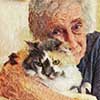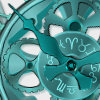 Re: January 2015 Video Tutorial -- Tracing Is Not Cheating!
Re: January 2015 Video Tutorial -- Tracing Is Not Cheating!

Originally Posted by
Gare

Hey, I appreciate all the kind words about my effort this month, thank you. In reality, I must say, though, that Google analytics are the only measure that my bosses can go by to judge the success of a piece, and statistically, a lot of the audience moves on after 4 minutes, so the call has been to keep the tutorials down to 6 minutes, tops. This was a story that could not be told in installments and certainly not in four minutes. I think the speed-painting videos on youTube are fun, but they're not tutorials. So what I said at the beginning of the thread was a bonafide apology in advance in case anyone was expecting a 3 second gem instead of excavating a while in a mine.
I like the long tutorials! Most of the tutes I study are around 20 minutes or longer. Those longer ones explain not just the how-to but the why to do it this or that way, and I find understanding the why helps me remember the techniques much better. It's like learning to swim -- someone can tell you to just flail your arms and legs about and you'll likely sink like a rock. Or you can get the technique explained and practice...and learn to swim.
"Twenty years from now you will be more disappointed by the things that you didn't do than by the ones you did do, so throw off the bowlines, sail away from safe harbor, catch the trade winds in your sails. Explore, Dream, Discover."
-Mark Twain
Time lapse video's are fine for understanding that the author has great ability but don't teach anyone diddly-squat. I watched a time-lapse video of someone drawing a fantastic car in 3 minutes using only Paint, but I learnt nowt!




 Reply With Quote
Reply With Quote






 Welcome to TG, Bob!
Welcome to TG, Bob! Wonderful results, Egg!!!
Wonderful results, Egg!!!

Bookmarks